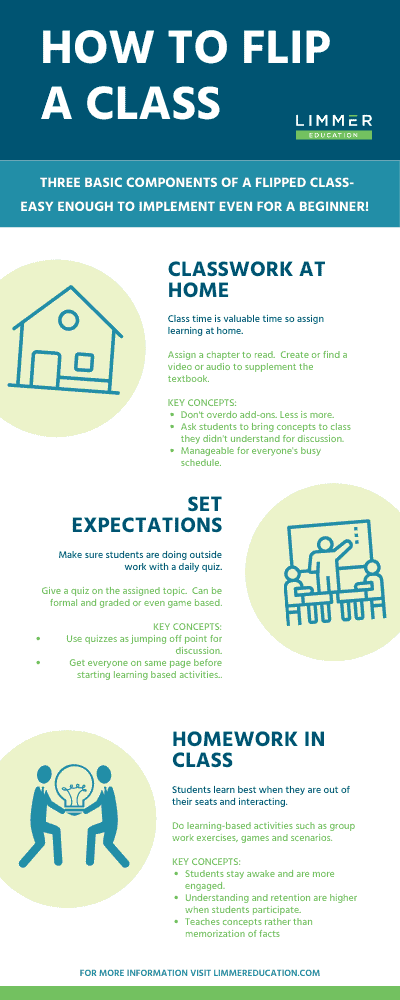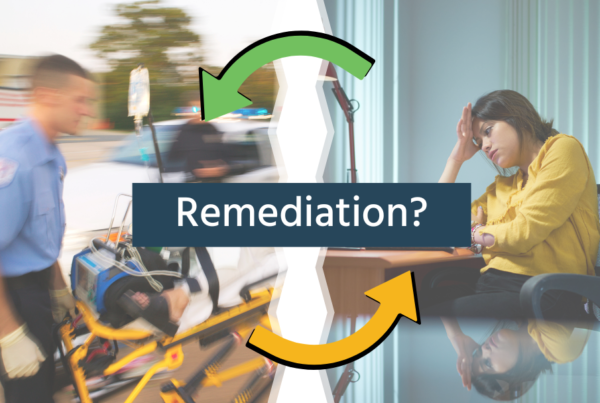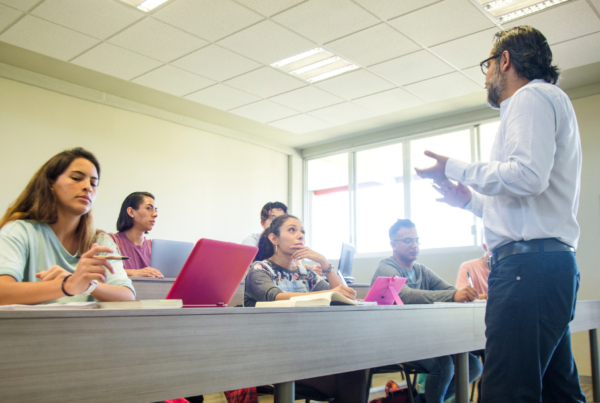In the traditional classroom, the tradition seems to be standing in a room and presenting material to whoever may or may not be listening. We’ve always said, teaching does not equal learning. That’s the concept behind the flipped classroom. An educator’s most significant role is not to teach but to facilitate learning.
Flipped Classrooms vs Traditional Classrooms
In a traditional class, most of the time is spent on lecturing (often accompanied by long PowerPoint presentations). In a flipped class, the emphasis is on practical application and discussion, rather than rote memorization. The flipped class uses a greater variety of activities to facilitate learning – like dynamic exercises, group activities, discussions, and labs.
The traditional class structure is falling out of style for several important reasons:
- Different types of students learn in various ways. Education based primarily on verbal lecture and wordy slides doesn’t set students up for success.
- The traditional class model provides a lump sum of knowledge but offers little in the way of helping students apply the information to real-world patients and scenarios. It puts them at a disadvantage, especially since EMS students are busier now than ever before, with many of them caring full-time for families and working another job while attending school.
- A single style of teaching makes it hard to stay engaged in the course. A flipped class requires hands-on activity and on-the-spot critical thinking. It’s far more likely to retain students’ attention and enthusiasm.
We believe flipped classes also bring out the best in educators, pushing them to think more creatively, stay more engaged in their classes, and be more plugged into their students’ success.
How to Flip your EMS Class
There are three basic components of a flipped class. If you’re just starting to flip your class, you’ll be glad to know these are easy to implement.
1. The “at-home” piece
Assign a chapter to read. We recommend also assigning an audio or video relevant to the topic. You can create the audio/video piece yourself, use audio lectures, or simply share episodes of your favorite medical podcast (see some of our favorite podcasts). Don’t overdo the add-ons. Strategically chosen, less can be more here.
This is the best use of everyone’s time. Class time is the most valuable time, so you can spend it on higher-level cognitive concepts (applying, analyzing) through group activities, scenarios, and practical skills rather than lecturing. Your students still have the responsibility of work outside of class, but it’s manageable for their busy schedules. Ask them to ear-mark things they don’t understand to bring to class for discussion.
2. In-class knowledge testing.
Give a quiz on the assigned topic to set expectations and make sure students have done the outside work. You can write your own quiz, use the quizzes from the textbook, or assign quizzes from review apps. Quizzes can be formal and graded, or informal and even game-based. Then, use quizzes as a jumping-off point for discussion before moving on to learning-based activities.
3. Perform learning-based activities.
EMS students learn best when they are up out of their seats and interacting. They stay awake, stay engaged, and are far more likely to understand and retain the material. Learning-based activities for EMS classrooms can be simple, including group work exercises, games, and making up and acting out scenarios.
We created a package of dynamic learning exercises for you to use in your EMS classroom. They teach concepts rather than facts while reducing lecture hours. Here are a few examples:
• Medical Emergencies: Altered Mental Status
• Patient Refusal Group Exercise
• ALS Intro to Healthcare
If you’re new to the flipped classroom, we encourage you to give it a try. You don’t have to overhaul your lesson plans all at once. Use the flipped technique here and there, and see what sort of difference it makes in student engagement and understanding. Take your lessons learned and use those to flip a few more class sessions. It gets easier and more rewarding as you go.
Got questions about how to make it work? Or advice to educators just starting out? Drop a line in the comment section below.
See also: EMT Class Curriculum Guide.



